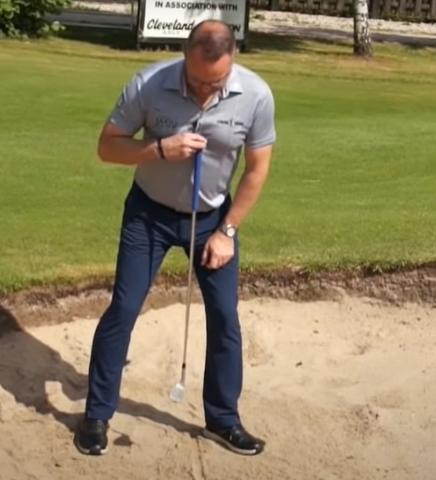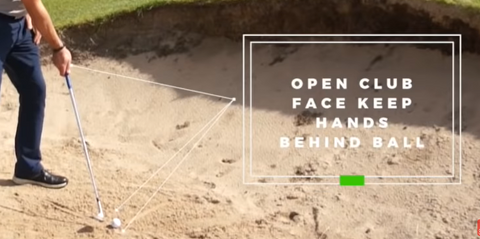A marker is very useful ( Only available for training )
The first thing you need to know about hitting out of a bunker is also the rule that you cannot ground the club.
You will be penalized one stroke if you allow your club to touch the sand's surface before hitting the ball. When you are ready to hit the ball, make sure you hover the club head over the sand and do not touch it before you swing.
Bunker shots are the clubs you are most likely to use in greenside bunkers. But you can use markers to help you in your bunker shot training.

A T-shaped marker can help you adjust the golf ball's position relative to your body.
The position of your hands is essential.
If the hand is positioned in front of the club face, it will inevitably cause problems such as spin. Put your hands behind you.
Alignment

The golf ball is aligned with the root of your left foot against your sternum. The club is in the center of your body. Because the point of contact with the sand is behind the ball, the ball can move more easily.
These will cause the sand to splash up and push the ball into the air. Make sure you have a good follow-through to ensure the ball rises in the air and leaves the bunker.
What you need to know about bunker balls
The type of bunker needs attention. The most common is the green bunker - an area close to the green that adds another obstacle for golfers who are approaching to hit the ball. Because they are hit on the approach shot, usually with relatively high iron, the ball may tuck into the bunker and give you a tough lie. If the lip of the bunker is very high, it is also tough to get out of it and, therefore, difficult to hit.
The next type of bunker is a fairway bunker. These can be difficult to hit as you usually need to use more club than a sand wedge.
When hitting out of a greenside bunker, an ideal technique is required. As you point the club face to the right, you need to align your feet to the left of the target (for right-handed players). These opposite alignments will cancel each other out and move the ball towards the target. Open the golf club's face and take a full swing a few inches back from the ball.

